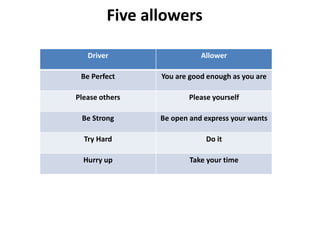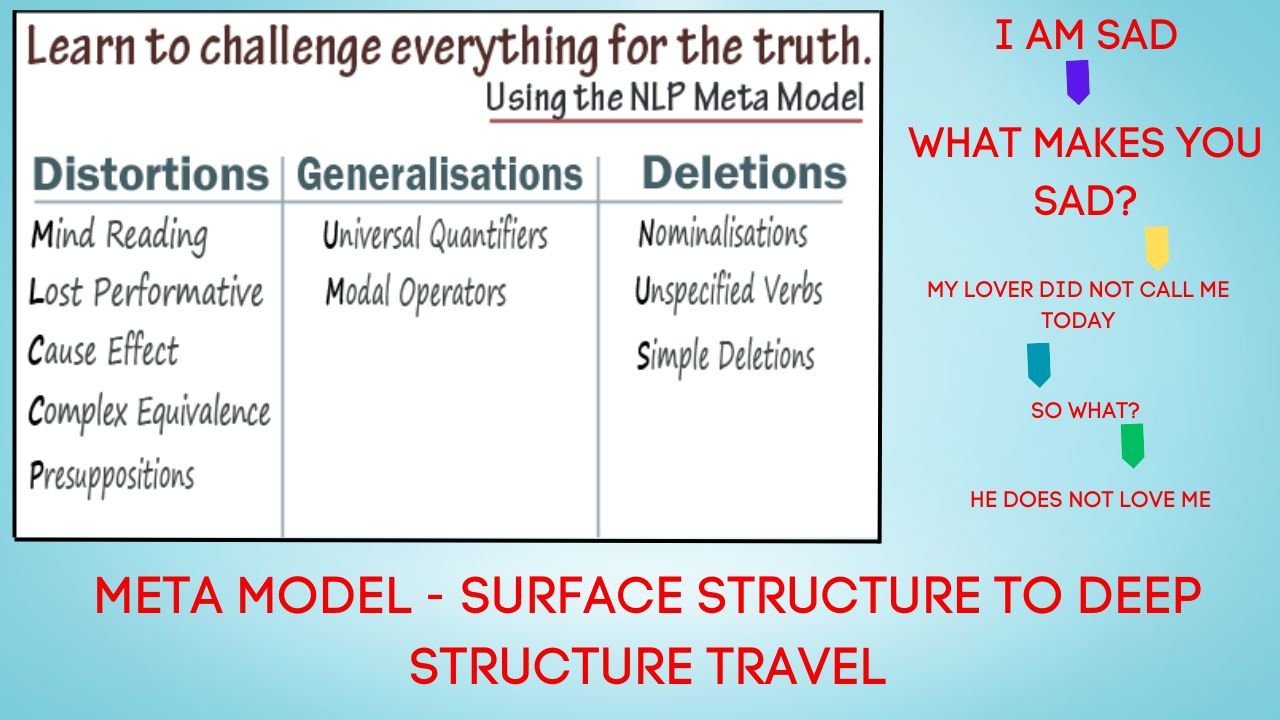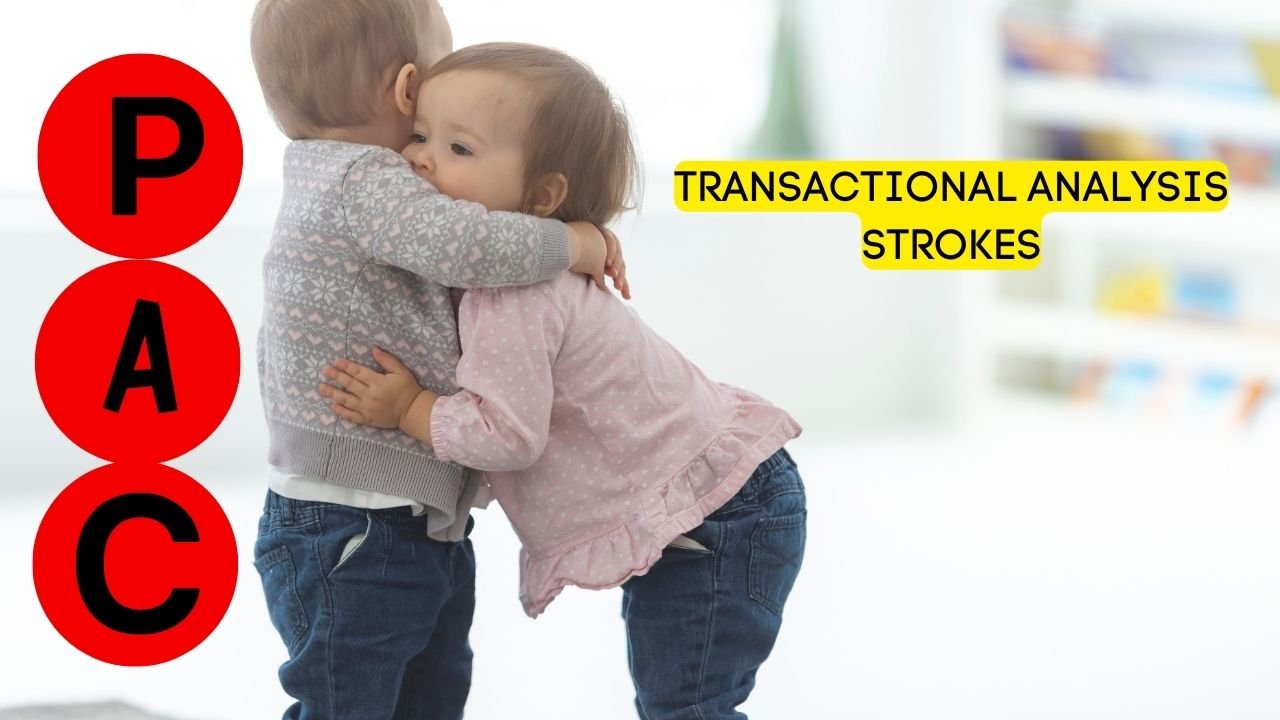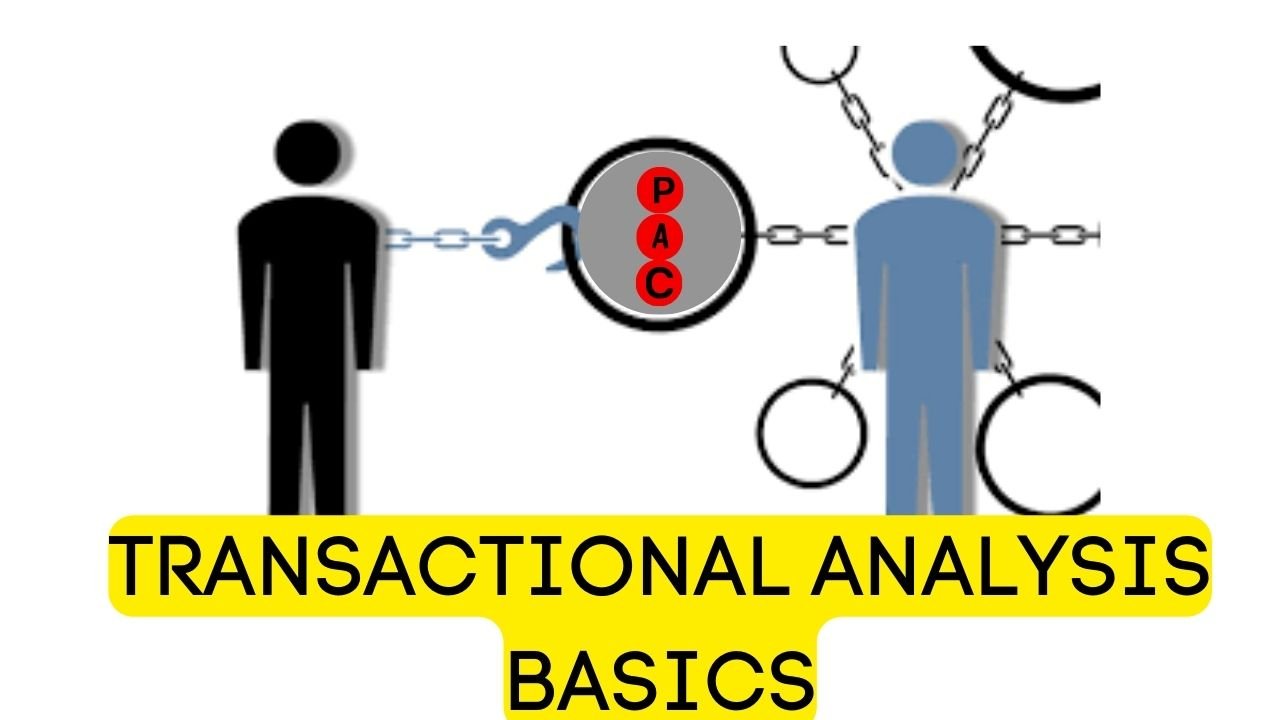
Understanding Student Counselling: Addressing Behavioral Challenges and Promoting Student Well-being
Introduction
Student counselling plays a crucial role in supporting students’ emotional and mental well-being, helping them navigate through various challenges they may face during their academic journey. In this article, we will explore the concept of student counselling, common behavioral problems faced by students, effective counselling methods, and the benefits it brings to students.
What is Student Counselling?
Student counselling refers to a professional service provided by trained counsellors to help students manage their personal, social, and academic challenges. It is a confidential and supportive process that aims to empower students to overcome obstacles, develop coping strategies, and enhance their overall well-being.
Common Behavioral Problems Faced by Students
Students often encounter a range of behavioral problems that can impact their academic performance and emotional health. Some common challenges include:
- Stress and Anxiety: Academic pressures, social expectations, and personal issues can contribute to high levels of stress and anxiety among students.
- Depression and Loneliness: Feelings of sadness, isolation, and low self-esteem can significantly impact a student’s ability to engage in their studies and form meaningful relationships.
- Substance Abuse: Some students may turn to substance abuse as a way to cope with stress or emotional difficulties, which can have detrimental effects on their overall well-being.
- Eating Disorders: Unhealthy relationships with food and body image can lead to eating disorders, affecting both physical and mental health.
- Academic Challenges: Difficulties in time management, study skills, or learning disabilities can hinder a student’s academic progress and confidence.
How to Conduct Student Counselling
Effective student counselling requires a compassionate and empathetic approach. Here are some key steps to conducting successful counselling sessions:
- Creating a Safe and Trusting Environment: Establishing a safe and confidential space allows students to open up and express their concerns without fear of judgment.
- Active Listening: Listening attentively and non-judgmentally helps the counsellor understand the student’s challenges and emotions.
- Empathy and Understanding: Showing empathy and understanding validates the student’s experiences and helps build rapport.
- Identifying Goals and Solutions: Collaboratively setting goals and exploring potential solutions empowers students to take ownership of their well-being.
- Providing Support and Resources: Offering guidance, resources, and referrals to other professionals when necessary ensures students receive comprehensive support.
Methods of Student Counselling
Student counselling can be delivered through various methods, depending on the student’s needs and preferences. Some common methods include:
- Individual Counselling: One-on-one sessions provide personalized support tailored to the student’s specific challenges.
- Group Counselling: Group sessions foster peer support and allow students to share their experiences while learning from one another.
- Online Counselling: Virtual counselling platforms provide convenient access to counselling services, especially for students in remote areas or those who prefer online interactions.
- Workshops and Seminars: Educational workshops and seminars address specific topics such as stress management, study skills, or building resilience.
Benefits of Student Counselling
Student counselling offers numerous benefits that contribute to students’ personal and academic growth:
- Improved Emotional Well-being: Counselling equips students with coping strategies to manage stress, anxiety, and other emotional challenges.
- Enhanced Academic Performance: By addressing academic obstacles and improving study skills, counselling can positively impact students’ academic achievements.
- Increased Self-awareness: Counselling helps students gain a deeper understanding of themselves, their strengths, and areas for personal growth.
- Healthy Relationships: Through counselling, students can develop effective communication skills and build healthier relationships with peers, family, and faculty.
- Improved Decision-making: Counselling assists students in making informed decisions about their academic and personal lives, leading to better outcomes.
Conclusion
Student counselling is a valuable resource that supports students in overcoming behavioral challenges, enhancing their emotional well-being, and achieving academic success. By providing a safe and supportive environment, employing effective counselling methods, and offering various counselling modalities, students can benefit greatly from this essential service.
Learn More
IAS-UPSC Examination: Pattern, Syllabus, and Preparation Guide
Introduction
The Indian Administrative Service (IAS) is one of the most prestigious and sought-after civil service positions in India. Conducted by the Union Public Service Commission (UPSC), the IAS-UPSC examination is a rigorous test of knowledge, aptitude, and leadership skills. In this blog post, we will discuss the examination pattern, syllabus for General Studies (GS) Paper 1 and Paper 2 (also known as CSAT), as well as the psychology syllabus for the mains in IAS. Additionally, we will provide some valuable tips on how to prepare for the IAS-UPSC examination.
Examination Pattern
The IAS-UPSC examination consists of three stages:
- Preliminary Examination
- Main Examination
- Personality Test (Interview)
The Preliminary Examination is the first stage and is divided into two papers: General Studies (GS) Paper 1 and General Studies (GS) Paper 2, also known as the Civil Services Aptitude Test (CSAT). Both papers are objective-type multiple-choice questions.
General Studies (GS) Paper 1
GS Paper 1 is designed to test the candidate’s knowledge in various subjects, including history, geography, economics, polity, science and technology, environment, and current affairs. The syllabus for GS Paper 1 is vast, and candidates are expected to have a comprehensive understanding of these subjects.
General Studies (GS) Paper 2 (CSAT)
GS Paper 2, also known as CSAT, focuses on testing the candidate’s aptitude and analytical skills. This paper includes questions on comprehension, logical reasoning, analytical ability, decision-making, problem-solving, and basic numeracy. It is important for candidates to practice regularly to improve their speed and accuracy in solving these types of questions.
Syllabus for GS 1
The syllabus for GS Paper 1 includes:
- Indian History and Culture
- Indian National Movement
- Indian and World Geography
- Indian Polity and Governance
- Economic and Social Development
- General Science
- Current Events of National and International Importance
Syllabus for GS 2 (CSAT)
The syllabus for GS Paper 2 (CSAT) includes:
- Comprehension
- Interpersonal Skills including Communication Skills
- Logical Reasoning and Analytical Ability
- Decision Making and Problem Solving
- General Mental Ability
- Basic Numeracy
Psychology Syllabus for Mains in IAS
For candidates opting for psychology as their optional subject in the mains examination, the syllabus includes:
- Paper 1: Foundations of Psychology
- Paper 2: Psychology in Human Resource Development
These papers cover various topics such as perception, learning, motivation, personality, intelligence, attitudes, group dynamics, organizational behavior, and human resource development.
How to Prepare for IAS-UPSC
Preparing for the IAS-UPSC examination requires dedication, discipline, and a structured approach. Here are some tips to help you in your preparation:
- Understand the syllabus: Familiarize yourself with the detailed syllabus for each paper and make a study plan accordingly.
- Read newspapers and magazines: Stay updated with current affairs and develop a habit of reading newspapers and magazines regularly.
- Refer to standard books: Consult standard reference books recommended by experts to build a strong foundation in the subjects.
- Practice previous years’ question papers: Solve previous years’ question papers to understand the exam pattern and improve your problem-solving skills.
- Take mock tests: Regularly take mock tests to assess your preparation and identify areas that need improvement.
- Time management: Develop effective time management skills to allocate sufficient time to each subject and revision.
- Stay motivated: Stay positive, motivated, and maintain a healthy work-life balance throughout your preparation.
Success stories:-
25-year-old blind woman from Madurai clears UPSC exams
Ayushi from village -Blind Girl Becomes an IAS Officer
Zapne-Blind girl from Tamil Nadu cracks UPSC exam
Conclusion
The IAS-UPSC examination is a challenging but rewarding journey for those aspiring to serve the nation in administrative roles. By understanding the examination pattern, syllabus, and following a strategic preparation plan, you can increase your chances of success. Remember, consistent effort, perseverance, and a positive mindset are key to cracking the IAS-UPSC examination.
CHECK YOUR UNDERSTANDING AND TAKE THE INTERNNATIONAL STUDENT DAY PARTICIPATION CERTIFICATE-2023
INTERNATIONAL STUDENTS’ DAY CELEBRATIONS
DOWNLOAD RESOURCES
click to download resources for ias-upsc
Learn More
Understanding Drivers in Transactional Analysis
Introduction
Transactional Analysis (TA) is a psychological theory that helps individuals understand their behavior and the dynamics of their relationships. One important concept in TA is the notion of drivers, which are unconscious patterns of behavior that drive our actions and decisions. In this article, we will explore the different types of drivers and their characteristics, as well as how to identify them through behavioral clues. Click the below link to assess your Driver behaviour.
https://emocare.co.in/understanding-transactional-analysis-and-its-impact-on-our-behavior/
Types of Drivers
1. Be Perfect Driver
The Be Perfect driver is characterized by a strong need for perfectionism. Individuals with this driver often set high standards for themselves and others, and they constantly strive to meet these expectations. They fear making mistakes and often experience anxiety when things are not perfect. They may also have a critical inner voice that constantly judges their performance.
2. Hurry Up Driver
The Hurry Up driver is characterized by a constant sense of urgency and impatience. Individuals with this driver often feel the need to rush through tasks and may become easily frustrated when things don’t move quickly enough. They may also have difficulty relaxing and enjoying the present moment, as they are always focused on what needs to be done next.
3. Try Hard Driver
The Try Hard driver is characterized by a strong need for approval and validation from others. Individuals with this driver often go above and beyond to please others and may neglect their own needs in the process. They may have a fear of rejection and may struggle with setting boundaries. They may also have a tendency to take on more responsibilities than they can handle.
4. Be Strong Driver
The Be Strong driver is characterized by a reluctance to show vulnerability or ask for help. Individuals with this driver often feel the need to appear strong and independent, even when they are struggling. They may have difficulty expressing their emotions and may suppress their needs in order to maintain a sense of control.
5. Please Me Driver
The Please Me driver is characterized by a strong need for attention and validation from others. Individuals with this driver often seek approval and affirmation from others and may go to great lengths to please them. They may have difficulty asserting themselves and may fear rejection or disapproval. They may also have a tendency to put others’ needs before their own.
Behavioral Clues to Identify Drivers
Identifying drivers can be challenging, as they are often unconscious patterns of behavior. However, there are some behavioral clues that can help us recognize when a driver is at play:
- Repeated patterns of behavior: If you notice that you consistently react in a certain way in different situations, it could be a sign of a driver.
- Emotional reactions: Drivers often trigger strong emotional reactions, such as anxiety, frustration, or a need for validation.
- Automatic responses: Drivers often lead to automatic, reflex-like responses without much conscious thought.
- Physical cues: Pay attention to any physical sensations or tension in your body when you are engaging in certain behaviors.
Allowers in Drivers

The therapist guides the client with Allowers after understanding his drivers.
While drivers can be limiting and may lead to unhealthy patterns of behavior, it’s important to note that they also have positive aspects. These positive aspects, known as “allowers,” can help individuals navigate certain situations effectively. For example:
- The Be Perfect driver can lead to high standards and attention to detail, which can be beneficial in certain professions.
- The Hurry Up driver can result in efficiency and productivity, especially in time-sensitive situations.
- The Try Hard driver can foster empathy and a strong work ethic, which can be valuable in helping others.
- The Be Strong driver can cultivate resilience and independence, which can be advantageous in challenging circumstances.
- The Please Me driver can promote harmony and cooperation, which can contribute to positive relationships.
Conclusion
Understanding drivers in Transactional Analysis can provide valuable insights into our behavior and the underlying motivations that drive us. By recognizing our drivers, we can gain greater self-awareness and make conscious choices that align with our values and goals. Remember, drivers are not inherently good or bad, but how we choose to engage with them can greatly impact our well-being and relationships.
Learn More
Understanding Neuro-Linguistic Programming (NLP) and the Meta Model
Introduction
Neuro-Linguistic Programming (NLP) is a powerful approach to understanding and influencing human behavior, communication, and personal development. It is based on the idea that our thoughts, language, and behavior are interconnected and can be effectively modified to achieve desired outcomes. One of the key components of NLP is the Meta Model, which is a set of linguistic patterns used to uncover and challenge limiting beliefs and assumptions. In this article, we will explore the concept of NLP and delve deeper into the Meta Model, providing examples and insights into its practical application.
What is Neuro-Linguistic Programming (NLP)?
Neuro-Linguistic Programming, often referred to as NLP, was developed in the 1970s by Richard Bandler and John Grinder. It is a methodology that examines the relationships between the mind (neuro), language (linguistic), and patterns of behavior (programming). NLP aims to identify and utilize the patterns of excellence exhibited by successful individuals to help others achieve similar results.
NLP operates under the assumption that our subjective experience of the world is shaped by our internal representations, which are created through our senses. By understanding and modifying these representations, we can enhance our communication, overcome limitations, and achieve personal growth.
The Meta Model in NLP
The Meta Model is a linguistic tool within NLP that helps to uncover and challenge the distortions, generalizations, and deletions in our language patterns. It allows us to clarify and expand our understanding of the speaker’s intended meaning, thereby improving communication and revealing underlying beliefs and assumptions.
The Meta Model consists of a series of questions designed to challenge the speaker’s language patterns and encourage them to provide more specific and detailed information. By doing so, the Meta Model helps to uncover hidden information and challenge limiting beliefs, allowing for a more accurate and comprehensive understanding of the speaker’s thoughts and intentions.

META MODEL EXAMPLE
Example of the Meta Model in Action
Let’s consider an example to illustrate how the Meta Model works. Suppose someone says, “I always fail at everything I do.” By using the Meta Model, we can challenge this statement and explore its underlying assumptions.
One way to challenge this statement is through the use of Simple Deletion, which involves removing or questioning missing information. In this case, we can ask, “Always fail at everything? Can you think of any specific instances where you have succeeded?”
By using Simple Deletion, we encourage the speaker to provide more specific and detailed information, challenging their generalization and potentially revealing instances of success that they may have overlooked or dismissed.
What is Simple deletion?
Deletion in NLP is one of the three major processes (including Distortion and Generalisation) on which the Meta Model is based. Deletion occurs when we leave out a portion of our experience as we make our Internal Representations. There are three types of Deletion. Simple deletion is one of the Deletion.
When a person speaks, they may not be aware of the whole story of an issue that they have stored inside. They will delete portions of the truth and tell you the bits that they have as their story of their truth.
For example, (A) “I am sad, Radha shouted at me” is a simple deletion as we have no idea what Radha shouted.. So the challenge would be to ask `What Radha shouted?” Or “What do you mean by sad?”
B) “I am a failure”
About what? How?
C) “She does not listen to me.”
Who, specifically, doesn’t listen to you?
(D) “I have no control.”
No control over what, whom?
(E) “Money is an issue.”
What kind of issue? What do you mean by using the word money?
Using Simple Deletion to Influence Others
Simple Deletion can also be used as a powerful tool to influence others in a positive and constructive manner. By selectively removing or questioning missing information, we can encourage individuals to consider alternative perspectives and possibilities.
For example, if someone says, “I can’t do it,” we can respond with, “What would happen if you could do it? What steps could you take to make it possible?” By using Simple Deletion, we challenge their limiting belief and open up new possibilities for action and achievement.
By employing Simple Deletion in our communication, we can help others overcome self-imposed limitations and expand their potential. However, it is important to use this tool ethically and with genuine intent to empower and support others.
Conclusion
Neuro-Linguistic Programming (NLP) and the Meta Model provide valuable insights and techniques for understanding and influencing human behavior and communication. By utilizing the Meta Model’s linguistic patterns, such as Simple Deletion, we can uncover hidden assumptions, challenge limiting beliefs, and open up new possibilities for personal growth and effective communication. Whether applied in personal or professional contexts, NLP and the Meta Model offer powerful tools for enhancing our understanding of ourselves and others, and ultimately achieving desired outcomes.
Learn More
Understanding Strokes in Transactional Analysis
Introduction
Transactional Analysis (TA) is a psychological theory and therapy framework developed by Eric Berne in the 1950s. It aims to understand and improve human interactions by analyzing the transactions between individuals.
What are Strokes in Transactional Analysis?
In TA, strokes refer to the basic unit of recognition or acknowledgment that individuals give and receive from others. They can be verbal or non-verbal and can range from simple gestures to more complex forms of communication.
Four Types of Strokes in Transactional Analysis
Strokes can be classified into four types based on their nature and impact:
1. Unconditional Positive Strokes
Unconditional positive strokes are genuine expressions of recognition, appreciation, and support given to others without any conditions attached. These strokes convey warmth, acceptance, and encouragement. Examples of unconditional positive strokes include compliments, praise, and acts of kindness.
2. Unconditional Negative Strokes
Unconditional negative strokes are expressions of disapproval, criticism, or rejection given without any conditions. These strokes can be damaging to the recipient’s self-esteem and can hinder healthy interactions. Examples of unconditional negative strokes include insults, put-downs, and harsh judgments.
3. Conditional Positive Strokes
Conditional positive strokes are recognition or acknowledgment given to others only when certain conditions are met. These strokes can be motivating and encourage individuals to meet expectations or standards. Examples of conditional positive strokes include rewards for achieving goals, promotions, and positive feedback based on performance.
4. Conditional Negative Strokes
Conditional negative strokes are expressions of disapproval or criticism given when certain conditions are not met. These strokes can be used to enforce boundaries or discourage certain behaviors. Examples of conditional negative strokes include punishments, reprimands, and negative feedback based on performance.
| POSIVE STROKES ( APPRECIATION) | NEGATIVE STROKES (BLAMING & INSULTING) | |
| Unconditional (What you are / Being) |
“I love you.” ` You can do’ |
“I hate you.” `You are an idiot’ |
| Conditional (What you do / Doing) |
“I like you when you smile.” |
“I don’t like you when you are sarcastic.” |
Assessment of Strokes in Transactional Analysis
Understanding the patterns and impact of strokes is crucial in TA. The assessment of strokes involves analyzing the quantity, quality, and distribution of strokes received and given by individuals.
Stroke Filters
Stroke filters refer to the internal beliefs and biases that influence how individuals perceive and interpret strokes. These filters can be shaped by past experiences, cultural norms, and personal values. They can either enhance or distort the reception of strokes.
Stroking Profile
A stroke profile is a comprehensive analysis of an individual’s stroke patterns. It includes an assessment of the types of strokes received and given, the balance between positive and negative strokes, and the impact of stroke filters on the individual’s interactions.
When it comes to giving and receiving strokes many of us use a series of repetitive, unconscious patterns – never thinking about what we are doing. Since strokes are fundamentally involved (directly or indirectly) in everything we do, it will be of great help to become aware of what is known as our ‘stroking profile’.
The stroking profile helps to measure how a person gives and receives strokes in four categories as mentioned above:-
- Giving strokes is ok
- Saying no is ok
- Taking strokes is ok
- Asking for strokes is ok
The profile takes the form of a table to be completed (see below) and makes us think about how we give and receive strokes. This can be an effective therapeutic tool as a person can then decide if they would like to change any part of their stroking profile. For example, a person may decide to stop discounting positive strokes and to ask for more of them. The profile can also help people understand their pattern. A person may not have understood why they receive so many negative strokes. The profile can help them to realize that they’ve been constantly asking for these negative strokes on an unconscious level. That may be because these kinds of strokes are familiar to them and they know how to react, whereas receiving positive strokes makes them feel extremely uncomfortable. (Of course, it could also be for a number of other reasons).
Maybe some people complete the table and realize that they have difficulties in giving strokes. By becoming aware of this, they can make a small conscious effort to gradually offer more strokes.
Positive Strokes
How often do you:
| Give positive strokes to others? | Refuse to give the positive strokes others expect from you? | Accept positive strokes? | Ask others for positive strokes? | |
| Usually | ||||
| Always | ||||
| Frequently | ||||
| Often | ||||
| Rarely | ||||
| Almost Never |
Negative Strokes
How often do you:
| Give negative strokes to others? | Refuse to give negative strokes? | Accept negative strokes? | Ask others (even indirectly) for negative strokes? | |
| Usually | ||||
| Always | ||||
| Frequently | ||||
| Often | ||||
| Rarely | ||||
| Almost Never |
Implications of Strokes in Transactional Analysis
The way strokes are given and received can significantly impact individuals’ self-esteem, relationships, and overall well-being. Positive strokes contribute to a healthy and supportive environment, while negative strokes can lead to emotional distress and strained interactions.
Understanding strokes and their implications in TA can help individuals become more aware of their communication patterns and make conscious efforts to provide and receive strokes in a constructive and nurturing manner.
Conclusion
Strokes play a vital role in Transactional Analysis, shaping the quality of human interactions. By recognizing and understanding the different types of strokes and their implications, individuals can foster healthier relationships and create a more positive and supportive environment.
Learn More
Understanding Transactional Analysis: Principles and Ego States
Introduction
Transactional Analysis (TA) is a psychological theory and therapeutic approach that helps individuals understand their behaviors, thoughts, and emotions in the context of their relationships with others. Developed by psychiatrist Eric Berne in the 1950s, TA has since gained popularity in various fields, including counseling, coaching, and organizational development. In this article, we will explore the principles of Transactional Analysis and delve into the concept of ego states within this framework.
Principles of Transactional Analysis
Transactional Analysis is based on a few fundamental principles that provide a framework for understanding human behavior:
- Everyone has worth: TA views every individual as having inherent worth and dignity, regardless of their past experiences or current behaviors. This principle emphasizes the importance of treating others with respect and empathy.
- People are capable of change: TA recognizes that individuals have the capacity to change and grow throughout their lives. This principle encourages personal responsibility and the belief that change is possible.
- Transactions are the building blocks of relationships: TA focuses on analyzing the transactions, or interactions, between individuals. It explores the communication patterns, both verbal and non-verbal, that shape relationships and influence behavior.
- Understanding ego states is key: Ego states, which we will discuss in the next section, are a central concept in TA. They represent different aspects of an individual’s personality and influence their thoughts, feelings, and behaviors.
Structural Ego States in Transactional Analysis
Ego states are the different parts of an individual’s personality that become activated in various situations. Transactional Analysis identifies three primary ego states:
- Parent ego state: The parent ego state is influenced by the individual’s experiences with authority figures, such as parents or teachers. It represents the internalized rules, values, and behaviors that were learned during childhood. The parent ego state can be nurturing, critical, or controlling, depending on the individual’s experiences.
- Adult ego state: The adult ego state is characterized by rational thinking and objective analysis. It is the part of the personality that deals with the present moment and makes decisions based on current information. The adult ego state is responsible for problem-solving and decision-making.
- Child ego state: The child ego state is influenced by the individual’s experiences as a child. It represents the emotions, feelings, and behaviors that were learned during childhood. The child ego state can be nurturing, playful, or rebellious, depending on the individual’s experiences.
These ego states interact with each other and with the ego states of others during transactions, shaping the dynamics of relationships and influencing behavior.
Functional Ego States in Transactional Analysis
Transactional Analysis also recognizes functional ego states, which are variations within each primary ego state. These functional ego states further explain the complexities of human behavior:
- Nurturing Parent: The nurturing parent ego state is characterized by care, support, and empathy. It represents the part of the individual that provides comfort and nurturance to others.
- Critical Parent: The critical parent ego state is characterized by judgment, criticism, and control. It represents the part of the individual that imposes rules and standards on others.
- Adaptive Child: The adaptive child ego state is characterized by compliance, conformity, and a desire to please others. It represents the part of the individual that seeks approval and avoids conflict.
- Natural Child: The natural child ego state is characterized by spontaneity, creativity, and a sense of wonder. It represents the part of the individual that embraces joy and expresses emotions freely.
These functional ego states can manifest differently in different individuals, depending on their experiences and personality traits. Understanding these ego states can help individuals gain insight into their own behavior and improve their relationships with others.
Conclusion
Transactional Analysis offers a valuable framework for understanding human behavior and improving interpersonal relationships. By exploring the principles of TA and delving into the concept of ego states, individuals can gain insight into their own thoughts, feelings, and behaviors, as well as those of others. This understanding can pave the way for personal growth, effective communication, and healthier relationships.
Learn More
The Ins and Outs of Internships: Types, Benefits, and the Best Place for Psychological Internships in India
Introduction
Internships are a valuable opportunity for students and young professionals to gain practical experience in their chosen field. In this blog post, we will explore the concept of internships, the different types available, and specifically focus on internships in the field of mental health. Furthermore, we will discuss what you can expect to learn during a psychological internship and highlight the best place for internships in India.
What is an Internship?
An internship is a period of work experience offered by an organization to individuals, typically students or recent graduates, looking to gain practical knowledge and skills in a specific field. Internships can be paid or unpaid and can vary in duration from a few weeks to several months.
Different Types of Internships
Internships come in various forms, catering to different interests and career paths. Some common types of internships include:
- Summer internships
- Virtual internships
- Research internships
- Corporate internships
- Non-profit internships
Internships in Mental Health
Internships in the field of mental health provide a unique opportunity to gain hands-on experience in supporting individuals with psychological challenges. These internships are typically offered by mental health clinics, hospitals, counseling centers, or private practices.
During a mental health internship, you may have the chance to:
- Observe and assist licensed therapists or psychologists in their work
- Conduct intake assessments and screenings
- Participate in individual or group therapy sessions
- Learn about various therapeutic approaches and interventions
- Develop skills in documentation and case management
What You Will Learn in a Psychological Internship
A psychological internship offers a wealth of learning opportunities. Some key areas of growth during a psychological internship include:
- Developing a deeper understanding of psychological disorders and their treatment
- Enhancing therapeutic communication and active listening skills
- Gaining experience in conducting assessments and formulating treatment plans
- Learning about ethical considerations and professional standards in the field of psychology
- Building resilience and self-care strategies to prevent burnout
The Best Place for Internships in India
When it comes to internships in India, one of the best places to consider is the National Institute of Mental Health and Neurosciences (NIMHANS) in Bangalore. NIMHANS is a premier institute for mental health education and research, offering a range of internship programs in various specialties.
Interning at NIMHANS provides the opportunity to work alongside renowned professionals in the field of mental health, gain exposure to cutting-edge research, and contribute to the advancement of mental health care in India.
Other notable institutions in India that offer internships in mental health include:
- Emocare
- Global Trainers,Coaches and Counsellors organisation ,
- Tata Institute of Social Sciences (TISS)
- All India Institute of Medical Sciences (AIIMS)
- Indian Psychiatric Society (IPS)
- Nimhans
Conclusion
Internships are an invaluable stepping stone in one’s career journey, providing practical experience and a chance to develop essential skills. For those interested in the field of mental health, internships offer a unique opportunity to make a difference in the lives of individuals experiencing psychological challenges. Consider exploring internships at renowned institutions like NIMHANS in India to gain a comprehensive understanding of mental health and contribute to the field’s growth and development.
Learn More
Understanding Counselling and Psychotherapy: Definitions, Differences, and Types
What is Counselling?
Counselling is a professional relationship between a trained counsellor and a client, aimed at helping the client explore and resolve personal, emotional, or psychological issues. It provides a safe and confidential space for individuals to discuss their concerns, gain insight into their feelings and behaviors, and develop coping strategies to improve their overall well-being.
There are several different definitions of counselling, but they all share the common goal of facilitating personal growth and positive change. Some definitions emphasize the supportive nature of counselling, while others highlight its problem-solving and goal-oriented approach.
What is Psychotherapy?
Psychotherapy is a form of therapy that focuses on helping individuals with more complex and deep-rooted psychological issues. It involves a therapeutic process that aims to increase self-awareness, promote personal development, and alleviate emotional distress.
Like counselling, psychotherapy also involves a professional relationship between a therapist and a client. However, it typically involves a longer-term commitment and a deeper exploration of the client’s thoughts, feelings, and behaviors.
Difference Between Counselling and Psychotherapy
The main difference between counselling and psychotherapy lies in the scope and depth of the issues addressed. Counselling is generally more short-term and focuses on specific problems or concerns, such as relationship issues, grief, or stress management. Psychotherapy, on the other hand, is often more long-term and deals with more complex psychological issues, such as trauma, personality disorders, or deep-seated emotional patterns.
While there is some overlap between the two, it is important to choose the right approach based on your specific needs and goals. A trained professional can help you determine which option is most suitable for you.
Different Types of Counselling
There are various types of counselling approaches, each with its own theoretical framework and techniques. Some common types include:
- Cognitive-Behavioral Therapy (CBT): Focuses on identifying and changing negative thoughts and behaviors that contribute to emotional difficulties.
- Psychodynamic Therapy: Explores unconscious patterns and unresolved conflicts that may be influencing current thoughts, feelings, and behaviors.
- Humanistic Therapy: Emphasizes self-exploration, personal growth, and the individual’s capacity for self-actualization.
- Family Therapy: Involves working with families to improve communication, resolve conflicts, and strengthen relationships.
The Counselling Process
The counselling process typically involves several stages:
- Assessment: The counsellor gathers information about the client’s concerns, history, and goals to understand their unique situation.
- Goal Setting: The client and counsellor collaborate to establish clear and achievable goals for the counselling sessions.
- Exploration: The client explores their thoughts, feelings, and behaviors in a safe and non-judgmental environment.
- Intervention: The counsellor provides support, guidance, and appropriate techniques to help the client address their concerns and work towards their goals.
- Evaluation: The progress is regularly reviewed, and adjustments are made to the counselling approach if necessary.
Directive Counselling and Non-Directive Counselling
Directive counselling and non-directive counselling are two different approaches within the field of counselling:
Directive Counselling: In this approach, the counsellor takes an active role in guiding the client towards specific goals and solutions. They may provide advice, suggestions, and practical strategies to address the client’s concerns.
Non-Directive Counselling: Also known as client-centered or person-centered counselling, this approach emphasizes empathy, active listening, and unconditional positive regard. The counsellor creates a supportive environment where the client can freely explore their feelings and thoughts without judgment or direction.
How to Choose a Counsellor?
Choosing a counsellor is an important decision that should be based on several factors:
- Qualifications and Credentials: Ensure the counsellor is licensed and has the necessary training and experience in the specific areas you need assistance with.
- Approach and Compatibility: Consider the counselling approach that aligns with your preferences and values. It is essential to feel comfortable and connected with the counsellor to establish a trusting therapeutic relationship.
- Referrals and Recommendations: Seek recommendations from trusted sources, such as friends, family, or healthcare professionals, who have had positive experiences with a particular counsellor.
- Cost and Accessibility: Consider the cost of counselling sessions and whether the counsellor’s location, availability, and mode of therapy (in-person or online) are convenient for you.
Becoming a Self-Counsellor
While seeking professional counselling is often beneficial, there are also ways to become a self-counsellor and practice self-care:
- Self-Reflection: Take time to reflect on your thoughts, feelings, and behaviors. Engage in journaling or mindfulness practices to gain insight into your emotional well-being.
- Self-Help Resources: Utilize self-help books, online resources, or support groups to learn coping strategies and gain a better understanding of your concerns.
- Self-Care Practices: Prioritize activities that promote your well-being, such as exercise, healthy eating, adequate sleep, and engaging in hobbies or activities you enjoy.
- Seeking Support: Reach out to trusted friends or family members for emotional support and guidance when needed.
Remember, self-counselling can be beneficial for personal growth and managing everyday challenges, but it is essential to seek professional help when dealing with more complex or persistent issues.
In conclusion, counselling and psychotherapy are valuable resources for individuals seeking support, guidance, and personal development. Understanding the definitions, differences, and various types of counselling approaches can help individuals make informed decisions about their mental health and well-being.
Learn More
Understanding Anxiety Disorders: Causes, Symptoms, and Treatment Options
What is Anxiety?
Anxiety is a natural response to stress or danger. It is a feeling of fear or apprehension about what’s to come. While occasional anxiety is a normal part of life, for some people, it can become a chronic condition that significantly affects their daily lives.
Anxiety and Anxiety Disorders
Anxiety disorders are a group of mental health conditions characterized by excessive and persistent worry, fear, or unease. These disorders go beyond the normal feelings of nervousness or stress and can interfere with a person’s ability to function.
What are Anxiety Disorders?
Anxiety disorders are a category of mental health disorders that involve excessive and irrational fear or worry. They can manifest in various ways and have different triggers, but they all share the common feature of excessive anxiety that is difficult to control.
Types of Anxiety Disorders
There are several types of anxiety disorders, each with its own unique symptoms and triggers:
- Generalized Anxiety Disorder (GAD): characterized by excessive worry and anxiety about everyday events and situations.
- Panic Disorder: marked by recurring panic attacks, which are sudden and intense episodes of fear and physical discomfort.
- Social Anxiety Disorder: involves an intense fear of social situations and a constant worry about being judged or embarrassed.
- Specific Phobias: intense fear of specific objects, situations, or activities.
- Obsessive-Compulsive Disorder (OCD): characterized by intrusive thoughts (obsessions) and repetitive behaviors (compulsions).
- Post-Traumatic Stress Disorder (PTSD): develops after experiencing or witnessing a traumatic event and involves flashbacks, nightmares, and severe anxiety.
Causes of Anxiety Disorders
Anxiety disorders can have multiple causes, including:
- Genetic predisposition
- Brain chemistry and imbalances in neurotransmitters
- Environmental factors, such as trauma or chronic stress
- Personality factors, such as being prone to negative thinking or having low self-esteem
Risk Factors for Anxiety Disorders
While anxiety disorders can affect anyone, certain factors may increase the risk of developing these disorders:
- Family history of anxiety disorders or other mental health conditions
- History of physical or sexual abuse
- Chronic medical conditions, such as heart disease or diabetes
- Substance abuse
- Stressful life events, such as the loss of a loved one or financial difficulties
Symptoms of Anxiety Disorders
The symptoms of anxiety disorders can vary depending on the specific disorder, but common symptoms include:
- Excessive worry or fear
- Feeling restless or on edge
- Irritability
- Trouble concentrating
- Sleep disturbances
- Physical symptoms like rapid heartbeat, sweating, or trembling
Diagnosis of Anxiety Disorders
Diagnosing anxiety disorders involves a thorough evaluation by a mental health professional. The diagnosis is based on the individual’s symptoms, medical history, and a psychological assessment. It is essential to rule out any underlying medical conditions that may be causing or contributing to the anxiety symptoms.
Treatment Options for Anxiety Disorders
Anxiety disorders can be effectively treated, and there are various treatment options available:
- Therapy: Cognitive-behavioral therapy (CBT) is often the first-line treatment for anxiety disorders. It helps individuals identify and change negative thought patterns and behaviors that contribute to anxiety.
- Medication: Antidepressants, anti-anxiety medications, and beta-blockers may be prescribed to help manage anxiety symptoms. These medications are typically used in conjunction with therapy.
- Lifestyle changes: Engaging in regular exercise, practicing relaxation techniques, maintaining a healthy diet, and getting enough sleep can all help reduce anxiety.
- Self-help strategies: Learning stress management techniques, practicing mindfulness or meditation, and seeking support from loved ones or support groups can also be beneficial.
Self-Treatment for Anxiety Disorders
While self-treatment can be helpful for managing anxiety, it is essential to consult with a healthcare professional for an accurate diagnosis and to develop an appropriate treatment plan. Self-treatment strategies may include:
- Deep breathing exercises
- Progressive muscle relaxation
- Mindfulness or meditation
- Journaling or expressive writing
- Engaging in hobbies or activities that bring joy
- Limiting caffeine and alcohol consumption
- Getting regular exercise
- Establishing a consistent sleep routine
Remember, self-treatment should complement professional care and should not replace it. If you suspect you have an anxiety disorder, reach out to a mental health professional for guidance and support.
Anxiety disorders are common but treatable. With the right support and treatment, individuals can learn to manage their anxiety and lead fulfilling lives.
Learn More
Understanding Depression: Symptoms, Differences, and Treatment Options
Introduction
Depression is a common mental health disorder that affects millions of people worldwide. It is important to understand the symptoms, differences from sadness or grief, and the various ways it can manifest in different age groups and genders. This article will explore the assessment and treatment options available for depression.
Symptoms of Depression
Depression is characterized by persistent feelings of sadness, hopelessness, and a loss of interest or pleasure in activities. Other common symptoms include:
- Changes in appetite and weight
- Sleep disturbances
- Difficulty concentrating or making decisions
- Fatigue or loss of energy
- Feelings of worthlessness or excessive guilt
- Recurrent thoughts of death or suicide
Depression vs. Sadness or Grief/Bereavement
While it is normal to experience sadness or grief after a loss or disappointment, depression is different. Sadness and grief are temporary and typically improve over time, whereas depression is a persistent condition that requires professional intervention. If symptoms persist for more than two weeks and interfere with daily functioning, it may be a sign of depression.
Depression Symptoms in Children and Teens
Depression can affect individuals of all ages, including children and teenagers. In younger individuals, symptoms may manifest differently and can include:
- Irritability or anger
- Withdrawal from friends and family
- Changes in appetite and sleep patterns
- Difficulty concentrating or performing well in school
- Physical complaints such as headaches or stomachaches
If you suspect your child or teenager may be experiencing depression, it is important to seek professional help.
Depression Symptoms in Older Adults
Depression in older adults is often overlooked or misdiagnosed. Symptoms may be attributed to other health conditions or dismissed as a normal part of aging. Common symptoms in older adults include:
- Memory problems
- Unexplained physical ailments
- Withdrawal from social activities
- Feelings of hopelessness or worthlessness
- Increased use of alcohol or medication
It is crucial for healthcare providers and caregivers to be vigilant in identifying depression in older adults and ensuring they receive appropriate support.
Depression Symptoms in Women
Depression affects women at a higher rate than men. Hormonal changes during puberty, pregnancy, and menopause can contribute to the development of depression. Common symptoms in women include:
- Increased irritability or mood swings
- Feelings of guilt or worthlessness
- Changes in appetite and sleep patterns
- Loss of interest in activities
- Thoughts of self-harm or suicide
It is important for women to seek support and treatment if they experience these symptoms.
Depression Symptoms in Men
Depression in men is often underreported and can be masked by anger or irritability. Men may be less likely to seek help due to societal expectations of masculinity. Common symptoms in men include:
- Increased anger or aggression
- Loss of interest in work or hobbies
- Physical symptoms such as headaches or digestive problems
- Substance abuse
- Thoughts of self-harm or suicide
It is crucial to encourage men to seek help and provide them with a safe space to discuss their emotions.
Assessment of Depression
Assessing depression involves a comprehensive evaluation by a healthcare professional. This may include a physical examination, psychological assessments, and interviews to determine the severity and impact of symptoms. It is important to be honest and open during the assessment process to ensure an accurate diagnosis.
Treatment for Depression
Treatment for depression can vary depending on the individual and the severity of symptoms. Common treatment options include:
- Psychotherapy: Talk therapy with a trained therapist can help individuals explore their thoughts and emotions, develop coping strategies, and improve their overall well-being.
- Medication: Antidepressant medications may be prescribed to help regulate brain chemistry and alleviate symptoms. It is important to work closely with a healthcare provider to find the right medication and dosage.
- Lifestyle changes: Engaging in regular exercise, maintaining a healthy diet, getting enough sleep, and reducing stress can all have a positive impact on depression symptoms.
Therapies for Depression
In addition to traditional treatment options, there are alternative therapies that can complement and enhance the treatment of depression. These include:
- Mindfulness and meditation: Practicing mindfulness and meditation techniques can help individuals manage stress, improve self-awareness, and promote emotional well-being.
- Art therapy: Engaging in creative activities such as painting or drawing can provide an outlet for self-expression and emotional healing.
- Exercise therapy: Physical activity has been shown to release endorphins, improve mood, and reduce symptoms of depression.
Conclusion
Depression is a complex mental health disorder that can affect individuals of all ages and genders. Recognizing the symptoms and seeking appropriate treatment is crucial for managing and overcoming depression. With the right support and interventions, individuals can lead fulfilling and meaningful lives.
Learn More
